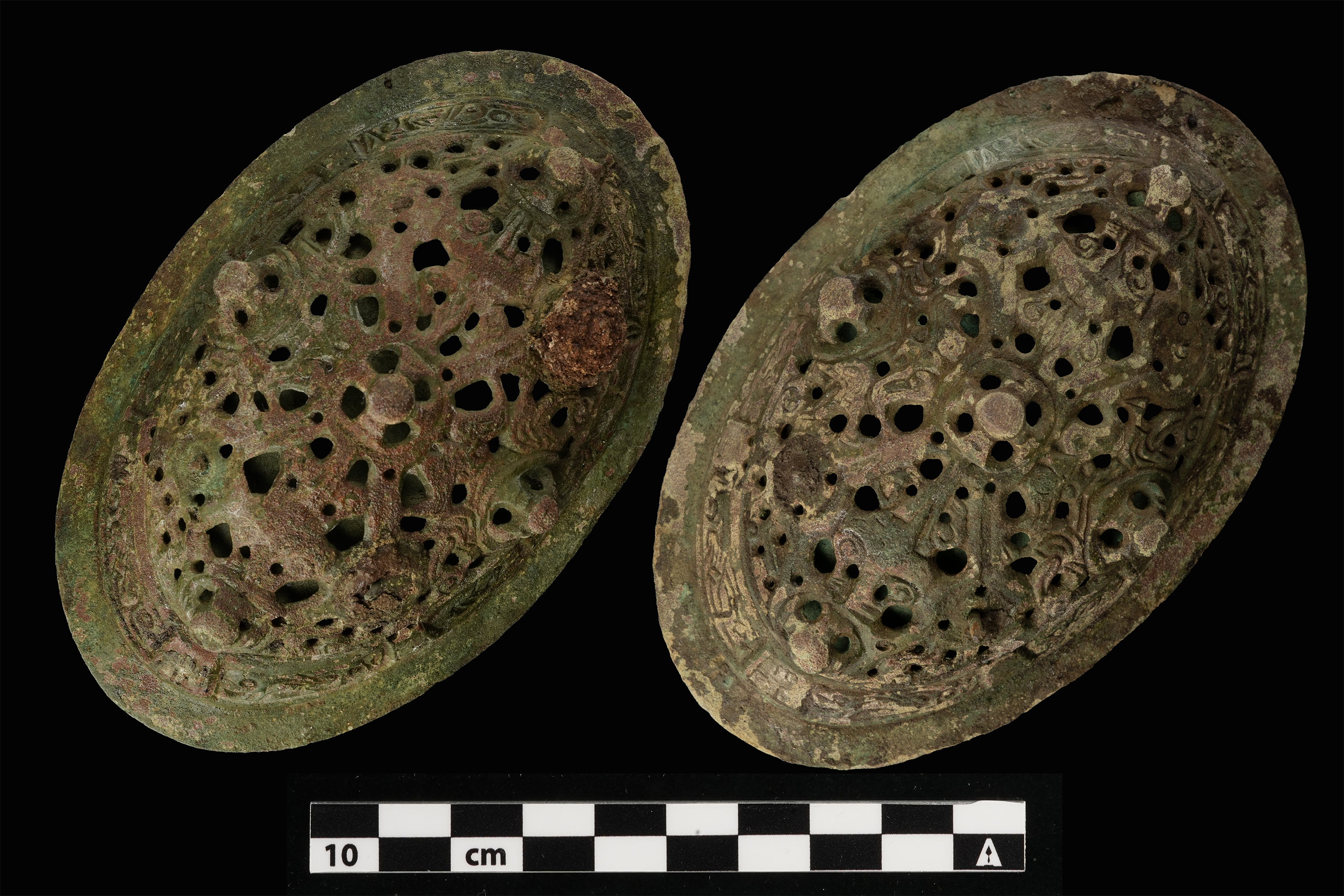Viking Age Boat Grave with woman and dog from Senja, Northern Norway
On a field in the small village of Sand on the island of Senja, Northern Norway, two metal detectorists accidentally discovered 1,000-year-old Viking Age jewelry. Now, archaeologists from the Arctic University Museum of Norway have uncovered the remains of a burial boat containing a woman and a small dog.

The remarkable discovery was made back in 2023. Two men, out with metal detectors, unearthed two beautifully decorated bronze oval brooches and some rib bones.
Wanted to expand the garage
The brooches were delivered to the Arctic University Museum of Norway, where they were dated to between the years 900 and 950 AD. Such cultural artifacts are automatically protected by law. When the landowner wanted to expand his garage, which was close to the discovery site, he had to apply to the County Municipality.
When it was determined that the construction could not proceed without damaging the cultural heritage, archaeologists from the Arctic University Museum of Norway were tasked with conducting an excavation of the site. In such cases, the state covers all costs, and excavations do not result in financial expenses for the landowner.
The excavation was carried out in May 2025. To the archaeologists' surprise, it turned out to be a boat grave - a burial where the deceased was interred in a boat. Boat burials are known from the period between 600 and 1000 AD, and several have been found in Nordland and Troms. However, this is the first boat grave discovered in Senja. An important piece of knowledge about the past has thus been preserved, almost by chance.
The Boat Was Sewn Together
The boat was poorly preserved, with most of the wood completely decomposed. However, its contours were clearly visible as dark markings in the light subsoil. Archaeologists estimate that the boat was about 5.4 meters long. It was likely a rowing boat used for coastal fishing, transport, and travel. No iron rivets were found in the boat, which instead appears to have been joined using wooden pegs and root fibers or animal sinews.
– So-called "sewn boats" were, until a few years ago, very rare in Northern Norway. However, in recent decades, several such vessels have been found in Iron Age graves in the region. Advances in excavation techniques have likely contributed to this increase. Perhaps sewn boats were as common as clinker-built boats in many parts of Northern Norway? says Anja Roth Niemi, project leader for the excavation.
– Quite recently, two such boats were excavated on Hillesøy, just a few kilometers north of Sand. In them, a man and a woman were buried in separate boats. They lived a few generations before the woman at Sand," Niemi explains.
A Significant Woman
The deceased was placed roughly in the middle of the boat, with her head facing north. Oval brooches are typical adornments in Norse women's graves, and archaeologists assume the deceased here was also a woman. Apart from where the bones were in contact with the bronze brooches, the skeleton was poorly preserved.
The sickle and whetstone may indicate farming and harvesting, while the spindle and weaving sword point to spinning and weaving.
– Textile tools in women's graves are often seen as an indicator that the buried individual held high status. In the Late Iron Age, the housewife oversaw textile production. This was extensive work; textiles were needed for clothing, blankets, and much more, but also for producing sails for boats and ships. It was likely important that the mistress could ensure high-quality textiles - not just fine clothing but also elaborate tapestries that could be displayed during feasts or other visits, emphasizing the host's status, says Niemi.
– Both the fact that she was buried in a boat, the grave's location, and the grave goods indicate that this was a woman of significant importance, Niemi continues.
Accompanied by Her Dog on Her Final Journey
The woman was not alone in the grave; a small dog was carefully placed at her feet. The archaeologists do not yet know what type of dog it was.
– Along with horses, dogs are the animals most commonly found in Late Iron Age graves. Horses are often found in parts and were likely sacrifices, while dogs are usually buried as whole animals. This suggests that dogs and humans had a close and cherished relationship even over a thousand years ago, Niemi says.
The dog may have been a pet, but it could also have had other functions. Was it a loyal companion accompanying her on her final journey, a hunting dog, or perhaps a guard dog meant to protect its owner in the afterlife?
What Happens Next with the Finds?
The grave was only 20–30 cm below the surface, and both the boat, skeleton, and artifacts were poorly preserved. To avoid damage, most of the finds were collected with the surrounding soil. These will now be carefully cleaned under controlled conditions in a laboratory. Only once the material is stabilized will it be possible to study the objects and skeletons in detail.
The woman's skeleton will be examined to determine her age, health, injuries, diet, and other factors that might reveal who she was and her living conditions. Experts on animal bones will try to learn more about the dog. Analyses of the wood and charcoal will provide information about when the burial took place and how the boat was constructed.
Will Provide Valuable Knowledge About the Region's Prehistory
– The finds from the excavation provide valuable knowledge about burial practices and the people and animals that lived in this area during the Viking Age. The Directorate for Cultural Heritage considers this a discovery of great cultural and historical value, says Isa Trøim, section head for archaeological cultural heritage at the Directorate for Cultural Heritage.

The Directorate decides on state funding for such projects and plays a key role in preserving cultural heritage.
Niemi is also excited to see what stories the woman and her dog can tell us.
– We expect this discovery to provide new and very exciting information about Viking Age society in Senja, which will also be important for expanding our knowledge of the region's prehistory. A time-consuming process awaits us with the finds, but we are very much looking forward to presenting the results when they are ready, Niemi concludes.
